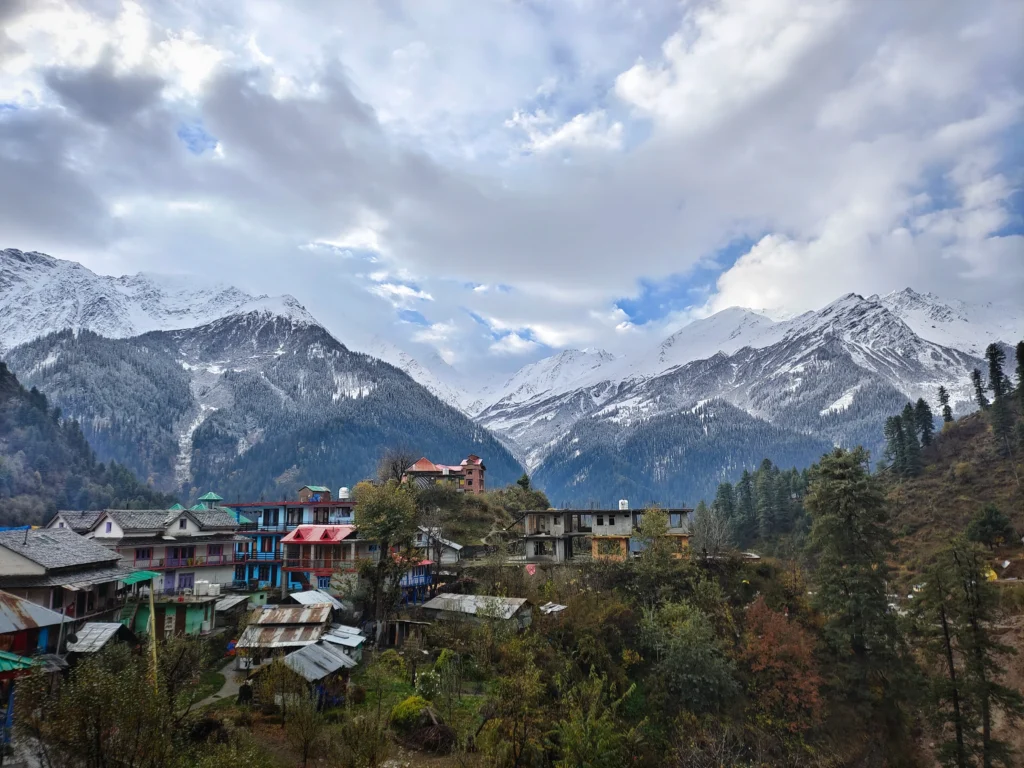Parvati Valley in Himachal Pradesh: A Blend of Nature, Spirituality, and Offbeat Experiences
Nestled in the Himalayas, Parvati Valley in Himachal Pradesh is a destination that effortlessly blends natural beauty with a laid-back mountain vibe. Surrounded by towering peaks, dense forests, and the ever-flowing Parvati River, the valley holds an irresistible charm for travelers seeking both peace and a sense of discovery. With each turn, it offers something new—be it a quaint village, a scenic trail, or a quiet spot to simply sit and soak in the view. But beyond its obvious beauty, there’s an energy here that’s hard to describe and even harder to forget. This introduction is just the beginning—there’s much more to explore in the hidden corners, local traditions, and unique experiences that define Parvati Valley.
Book here Himachal Pradesh Tour Packages
Best Time to Visit Parvati Valley

The best time to visit Parvati Valley is from March to June and October to November, when the weather is pleasant, skies are clear, and the landscapes are at their most vibrant. Spring and early summer bring blooming wildflowers, lush greenery, and perfect trekking conditions, while autumn offers crisp air, golden hues, and quieter trails after the monsoon season. These months are ideal for exploring villages like Kasol, Tosh, and Pulga or embarking on treks like Kheerganga. Winter (December to February) transforms the valley into a snowy wonderland, but heavy snowfall can block roads and limit access to higher villages. Monsoon months (July to September) are best avoided due to landslides and slippery trails, making travel risky and unpredictable.
How to Reach Parvati Valley in Himachal Pradesh
1. By Air
The nearest airport is Bhuntar Airport (Kullu-Manali Airport), located about 31 km from Kasol, the main entry point to Parvati Valley. You can take a flight from Delhi or Chandigarh to Bhuntar. From the airport, hire a taxi or take a local bus to reach Kasol or other nearby villages like Manikaran and Tosh.
2. By Road
Parvati Valley is well-connected by road. You can take a Volvo or HRTC bus from major cities like Delhi, Chandigarh, or Manali to Bhuntar or Kullu. From there, local buses or taxis can take you deeper into the valley. The roads are scenic but winding, so prepare for a mountain drive.
3. By Train
The nearest railway station is Joginder Nagar, but it has limited train options. A better route is to take a train to Chandigarh or Pathankot, then continue your journey by bus or taxi to Bhuntar, and onward to Parvati Valley.
Tips for traveling to Parvati Valley in Himachal Pradesh
1. Pack warm clothes, especially if traveling in winter or to higher altitudes.
2. Stay hydrated as trekking and the dry climate can lead to dehydration.
3. Respect local customs, particularly in villages like Malana, where traditions are sacred.
4. Carry cash since ATMs are limited in remote areas like Tosh and Malana.
5. Watch out for altitude sickness; take it slow and rest frequently on treks.
6. Book accommodations in advance during peak seasons to avoid overcrowding.
Conclusion
In conclusion, Parvati Valley in Himachal Pradesh is a truly mesmerizing destination that offers a perfect blend of adventure, nature, and culture. Whether you’re trekking to Kheerganga, exploring charming villages like Tosh and Malana, or simply soaking in the tranquility by the Parvati River, the valley promises an unforgettable experience. However, it’s important to be well-prepared for the rugged terrain, changing weather, and remote locations. By respecting local traditions, staying mindful of the environment, and packing wisely, you can ensure a smooth and enriching journey. Parvati Valley invites all who seek to connect with nature and immerse themselves in the beauty of the Himalayas.
Book here Himachal Pradesh Tour Packages
People also ask about the Parvati Valley in Himachal Pradesh
1. What is Parvati Valley known for?
Parvati Valley is famous for its stunning natural beauty, lush green landscapes, and serene atmosphere. It is a popular destination for trekking, camping, and exploring hidden villages, along with its famous hot springs and the Parvati River.
2. How can I reach Parvati Valley?
Parvati Valley can be reached via road from Kullu or Bhuntar. The nearest airport is Bhuntar Airport, and the nearest railway station is in Joginder Nagar. Most travelers reach Kullu by bus or taxi and then continue to Parvati Valley.
3. What are the best trekking routes in Parvati Valley?
Some of the popular trekking routes include the Kheerganga Trek, the Pin Parvati Pass Trek, and the Tosh Valley Trek. These treks offer stunning views of the surrounding mountains, rivers, and forests.
4. Is Parvati Valley safe for tourists?
Yes, Parvati Valley is generally safe for tourists. However, like any remote area, it’s important to exercise caution, especially during treks. Always travel with a guide, carry sufficient supplies, and be aware of the weather conditions.
5. What is the best time to visit Parvati Valley?
The best time to visit is from March to June (summer months) and September to November (autumn). Winter months can be harsh and cold, especially for trekking, though the snowfall can make it a beautiful winter destination.
